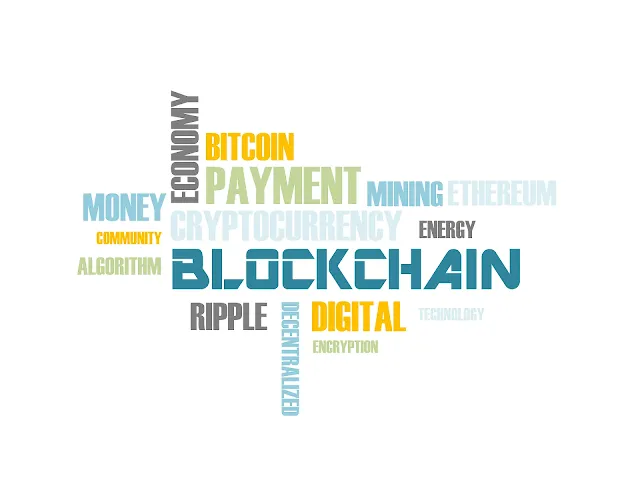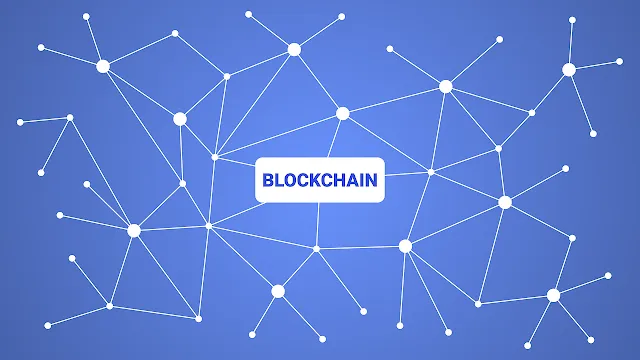Blockchain is a network that allows for the decentralized dissemination of a ledger across numerous computers.
Prior to the use of blockchain, ledgers were held centrally, making them vulnerable to hacking.
Any computer that is connected to the ledger now has a copy of the record, which is shared throughout the network (also known as nodes). Hacking is nearly impossible as a result.
Blockchain is also the technology that powers cryptocurrencies like Bitcoin and Ethereum.
The blockchain is a list of records called blocks that is constantly expanding. A cryptographic hash of the previous block is included in each block, as well as a timestamp.
Peer-to-peer (P2P) networks underpin blockchain technology. All partners in the chain must agree on any changes to the recorded transactions before they can be implemented.
Working of Blockchain
 |
| Blockchain Working |
To store the ledger, a network with numerous nodes is required, as previously indicated. As a result, every computer has a duplicate of the same document - the Blockchain.
When a new transaction or piece of information is uploaded, all of the computers in the network confirm it and then add it to the chain as a block.
This validation method ensures that no one cheats and that everyone follows the system's regulations.
Hacking such a network is nearly hard due to its decentralization.
As a result, the Blockchain is a massive database that anybody may use. But, more crucially, it's an open-source network that protects transaction data confidentiality and privacy.
Let's have a look at an example to help you grasp it better.
Features of Blockchain Technology
The following are the components of blockchain technology:
Digital Transactions:
This is when digital assets, such as cryptocurrency, are traded.
Digital Signature:
This is a type of electronic signature that ensures that a transaction or asset is genuine. This ensures that all transactions are safe and cannot be readily compromised using blockchain technology.
Distributed Database:
The ledger is a networked database that records all transactions in real-time. Blocks of transactions are created, which should take about 10 minutes on average to add. The blockchain gets its name from the fact that each block is added to the chain in sequential order.
Mining:
Miners will validate and record a transaction on the blockchain after it has been processed by solving complex mathematical problems with computing power. Cryptocurrencies such as Bitcoin compensate miners for their efforts (BTC).
Blocks' Chaining:
For immutability, all blocks are linked together. One of the most significant advantages of Blockchain technology is that each block refers to the preceding block, which can never be modified (when new transactions are added). It is almost difficult to rewrite history by altering previous records since all subsequent blocks would have to be rewritten as well, which would necessitate more processing power than the world currently has. Cryptocurrencies are made viable by Blockchain technology because of their immutability.
Decentralized Network:
Transactions are not handled by a centralized third party. All peers in a decentralized network are responsible for processing and validating transactions.
Peer-to-Peer Network:
Without a central authority or trusted middleman, blockchain technology employs a peer-to-peer network to conduct and verify transactions on the ledger. In a blockchain, all nodes have the same status and must work together to achieve consensus.
Benefits of Using Blockchain:
 |
| Blockchain |
Blockchain technology can be applied in a variety of ways. The following are a few of them:
Information storage:
This is the most frequent application of blockchain technology, which allows us to store data across a network.
Digital assets include:
Blockchain is a technology that is used to produce digital assets such as cryptocurrencies and to conduct secure transactions with them. Cryptocurrencies, like the US currency, have a variety of various sorts and forms of value.
Verification of documents:
Data is shared across a network in this application, which is comparable to the first.
Track items:
Blockchain is used to track one-of-a-kind commodities such as diamonds, autos, and shipping containers, among other things. This eliminates the possibility of duplicate or fraud.
Maintaining records:
In this situation, blockchain can be used to store information about transactions, digital assets, and other types of records in a safe manner.
Money transfer that is safe:
Without the use of a third party, blockchain allows you to conduct secure transactions. You can observe what's going on in real-time and check that each transaction is valid.
Conclusion
After you've learned about the different components of Blockchain technology and how it works, it's time to see if your firm could benefit from it. This can help you decide if you should invest in the technology right away or wait and look into alternative options.
You're ready to apply what you've learned in your firm to drive digital transformation.




Post a Comment